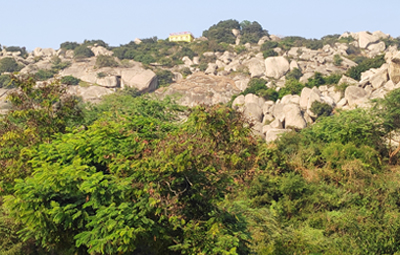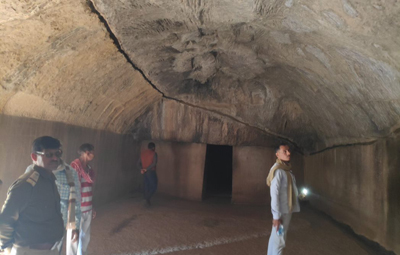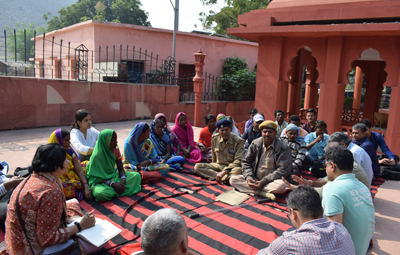Barabar Cave-Tourism is an initiative of Gaya Forest Division to promote conservation and sustainable livelihoods involving local communities. It is an initiative to encourage the spiritual and leisure tourists visiting Barabar Caves and Lord Shiva Temple (Siddheswar Nath Temple) on the Barabar Hill for responsible tourism and participate in conservation of nature and its unique resources. Barabar Hill is located in the northern part of Gaya district bordering Jehanabad district and the hill range is stretched over 5-6 kilometres and has a forest area of about 1100 ha. The ecotourism activities are carried out by Gaya Forest Division with the help of Eco Development Committee constituted in Bhaik Gram Panchayat.
About Barabar Hill Caves
Barabar Hill Caves, which have magnificent architectural beauty, are located in Barabar Hill in Makhdumpur block of Jehanabad district. The Barabar Hill Caves are the oldest surviving rock-cut caves in India, dating back to the Mauryan Empire (322–185 BCE). There are 7 nos. of caves – 4 in Barabar Hill (Lomas Rishi, Sudama, Viswamitra and Karna Chopar Caves) and 3 in Nagarjuni Hill (Vahiyaka, Gopika and Vadathika Caves) and located nearly 2 kms apart. These caves are impressive monuments and depict the unique skills of the then artisans. The caves in Barabar made by King Asoka were dedicated to followers of Ajivika sect founded by Makhali Gosala. Ajivika is a lost Indian religion originated during the era of Buddhism and Jainism. Ajivika was a major rival to Vedic religion, Early phase of Buddhism and Jainism. King Asoka being a staunch follower of Buddhism had also dedicated the Barabar Caves to Ajivikas, which shows the patronage and tolerance of Mauryan kings to other religions. The caves in Nagarjuni Hill were constructed by the Grandson of Asoka, Dasaratha for the Ajivikas. The caves in Barabar and Nagarjuni Hills were further beautified during the Gupta dynasty.
On the top of the Barabar Hill, there is a Lord Shiva Temple (Siddheswar Nath Temple) constructed by the Guptas during 7th Century AD, which is visited by half a million pilgrims every year during the Monsoons (Sravan festival). There are two lakes, which attract over 15 varieties of water birds providing the opportunities for the bird watching.
Both domestic and international visitors visit Barabar Caves, which is recognized as an archaeological site by the Archaeological Society of India. There is a museum managed by the Society.
About USAID’s Forest-PLUS 2.0 program
This website is made possible by the support of the USAID’s Forest-PLUS 2.0 program. The program aims to establish community based Eco-Tourism in Barabar Hills. The efforts have been made to educate and train the communities to understand the ecological importance of the forest and develop different value chains to ensure sustainable livelihood opportunities.
Initiated in 2018, Forest-PLUS 2.0 program is a joint program of the United States Agency for International Development (USAID) and Government of India’s Ministry of Environment, Forest and Climate Change (MoEFCC). The program aims at supporting the stakeholders to manage forests as important components of a broad-based, inclusive, and sustainable economic growth that meet local needs and addresses global environmental challenges. Forest-PLUS 2.0 activities are implemented in three landscapes- Thiruvananthapuram in Kerala, Gaya in Bihar, and Medak in Telangana.


